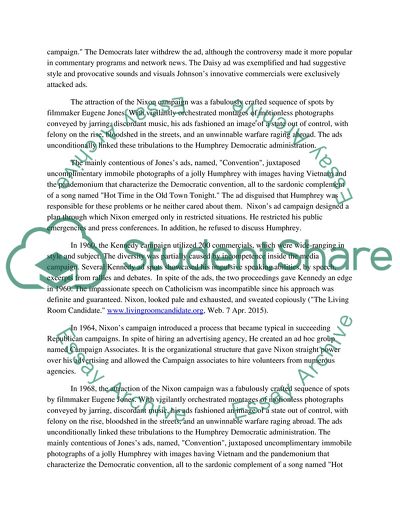Cite this document
(Television Campaign Ads Essay Example | Topics and Well Written Essays - 2000 words, n.d.)
Television Campaign Ads Essay Example | Topics and Well Written Essays - 2000 words. https://studentshare.org/history/1868747-television-campaign-ads
Television Campaign Ads Essay Example | Topics and Well Written Essays - 2000 words. https://studentshare.org/history/1868747-television-campaign-ads
(Television Campaign Ads Essay Example | Topics and Well Written Essays - 2000 Words)
Television Campaign Ads Essay Example | Topics and Well Written Essays - 2000 Words. https://studentshare.org/history/1868747-television-campaign-ads.
Television Campaign Ads Essay Example | Topics and Well Written Essays - 2000 Words. https://studentshare.org/history/1868747-television-campaign-ads.
“Television Campaign Ads Essay Example | Topics and Well Written Essays - 2000 Words”. https://studentshare.org/history/1868747-television-campaign-ads.


